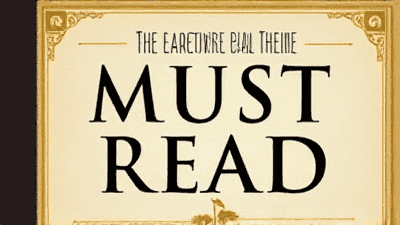
Classic literature often comes with a reputation for being dense and difficult to navigate, filled with complex language and intricate themes that can intimidate even the most avid readers. However, many classic books are surprisingly accessible and enjoyable, offering captivating stories and memorable characters that are easy to engage with.
What Makes a Classic Book Easy and Fun to Read
When we think about classic literature, we often envision lengthy tomes filled with archaic language. However, many classics are not only rich in themes but also possess qualities that make them easy to read. Here are some characteristics that define a classic book as easy and enjoyable:
Clear and Engaging Prose
Many accessible classics feature straightforward writing styles that draw readers in rather than push them away. Authors who use clear language allow their narratives to shine without unnecessary complexity.
Relatable Themes
Classic books that tackle universal themes such as love, friendship, and the human experience resonate with readers across generations. These themes often evoke strong emotions and create connections that enhance the reading experience.
Memorable Characters
Well-crafted characters can make any story more compelling. Classic books with relatable, dynamic characters invite readers to invest in their journeys, making the experience of reading feel immersive and enjoyable.
Captivating Plots
A classic book with a gripping plot keeps readers turning pages, eager to discover what happens next. Accessible classics often include engaging storylines that capture the imagination from the very first chapter.
Humor and Wit
Many classic authors have a knack for incorporating humor and wit into their writing. Light-hearted moments or clever dialogue can make the reading experience all the more enjoyable, providing levity even in more serious narratives.
Classic Books to Enjoy

Now that we have established what makes a classic book easy and fun to read, let us explore some delightful selections that fit this criteria. Each book on this list offers a unique experience and showcases the timeless nature of classic literature.
1. "Pride and Prejudice" by Jane Austen
Jane Austen's "Pride and Prejudice" is a beloved classic that remains a favorite among readers of all ages. The novel follows the spirited Elizabeth Bennet as she navigates societal expectations and romantic entanglements in 19th-century England. With its witty dialogue, relatable characters, and humorous critique of social norms, the book offers both entertainment and insight. Austen's clear prose and engaging storytelling make the novel an easy and enjoyable read.
2. "The Adventures of Tom Sawyer" by Mark Twain
Mark Twain's "The Adventures of Tom Sawyer" is a delightful tale that captures the spirit of childhood and adventure. The story follows young Tom Sawyer and his friend Huck Finn as they get into mischief along the banks of the Mississippi River. Twain's vivid descriptions and characters come to life, and his ability to weave humor and nostalgia throughout the narrative makes this classic thoroughly engaging. The book's episodic structure allows for quick reading, making it a fun choice for readers of all ages.
3. "The Great Gatsby" by F. Scott Fitzgerald
F. Scott Fitzgerald's "The Great Gatsby" is a short and impactful novel that portrays the excess and glamour of the Roaring Twenties. The story revolves around the mysterious Jay Gatsby, his unrequited love for Daisy Buchanan, and the moral decay hidden beneath the seemingly perfect façade of high society. Fitzgerald's lyrical yet accessible prose, along with its captivating plot and rich themes, makes this classic easy to read and hard to forget. The narrative's brevity pulls readers in, allowing them to experience the Jazz Age in a vivid way.
4. "To Kill a Mockingbird" by Harper Lee
Harper Lee's "To Kill a Mockingbird" is a poignant exploration of morality, justice, and empathy, set against the backdrop of the racially charged American South during the 1930s. Through the eyes of young Scout Finch, readers witness the complexities of human nature and the fight against prejudice, as her father, Atticus Finch, defends a black man accused of a crime he did not commit. Lee's straightforward narrative style and strong moral messages make this novel both accessible and thought-provoking, offering enjoyment to readers who appreciate rich characters and social commentary.
5. "Animal Farm" by George Orwell
George Orwell's "Animal Farm" is a powerful allegory that critiques totalitarianism and explores the struggle for power. The story follows a group of farm animals who revolt against their human farmer, only to face new challenges in their quest for equality. Despite its serious themes, Orwell's accessible writing and the simplicity of the animal characters make the book easy to read. The engaging narrative encourages readers to reflect on larger societal issues while enjoying a satirical tale filled with wit and irony.
6. "The Secret Garden" by Frances Hodgson Burnett
Frances Hodgson Burnett's "The Secret Garden" is a timeless children's classic that explores themes of healing, friendship, and the beauty of nature. The story follows Mary Lennox, a spoiled and lonely girl who discovers a hidden garden that was once beautiful but is now neglected. As Mary nurtures the garden back to life, she also undergoes a transformation, ultimately finding joy and companionship. Burnett's clear and descriptive prose invites readers into a magical world, and the charming narrative makes this classic both easy to read and wonderfully uplifting.
7. "The Wonderful Wizard of Oz" by L. Frank Baum
L. Frank Baum's "The Wonderful Wizard of Oz" is a beloved tale filled with adventure, friendship, and imagination. Following the journey of Dorothy Gale as she traverses the magical land of Oz, readers are introduced to a colorful cast of characters, including the Scarecrow, the Tin Man, and the Cowardly Lion. Baum's straightforward writing style and imaginative storytelling make this classic accessible to readers of all ages. The themes of friendship and self-discovery resonate deeply, adding to the story's enduring popularity.
8. "Little Women" by Louisa May Alcott
Louisa May Alcott's "Little Women" offers a heartwarming glimpse into the lives of the four March sisters—Meg, Jo, Beth, and Amy—as they navigate the challenges of growing up during the Civil War era. The novel's relatable themes of family, love, and personal growth are presented through Alcott's engaging prose and endearing characters. Readers easily connect with the sisters' struggles and aspirations, making "Little Women" a timeless classic that is both enjoyable and comforting.
9. "The Time Machine" by H.G. Wells
H.G. Wells' "The Time Machine" is an enthralling science fiction novella that challenges the boundaries of time and space. The story follows an unnamed protagonist as he invents a time machine and travels to the distant future, where he encounters vastly different societies and existential questions about humanity. Despite its speculative nature, Wells' writing remains clear and concise, and the imaginative plot keeps readers captivated from start to finish. This classic is perfect for those seeking a mix of adventure and thought-provoking ideas.
10. "Treasure Island" by Robert Louis Stevenson
Robert Louis Stevenson's "Treasure Island" is the quintessential adventure novel that captures the essence of piracy and treasure hunting. The story follows young Jim Hawkins as he embarks on a thrilling quest for buried treasure, encountering colorful characters along the way. Stevenson's vivid descriptions and gripping action scenes make the reading experience fast-paced and engaging. The straightforward narrative ensures that readers can easily escape into the world of pirates and adventures, making it a classic to cherish.
11. "The Picture of Dorian Gray" by Oscar Wilde
Oscar Wilde's "The Picture of Dorian Gray" is a mesmerizing exploration of beauty, morality, and the consequences of a hedonistic lifestyle. The story centers around young Dorian Gray, who wishes to remain eternally youthful while his portrait ages in his place. Wilde's sharp wit and elegant prose make this classic accessible, while its provocative themes prompt deep reflection. The novel's combination of intrigue, philosophy, and engaging storytelling ensures readers will find it both easy to grasp and thought-provoking.
12. "Fahrenheit 451" by Ray Bradbury
Ray Bradbury's "Fahrenheit 451" is a dystopian novel set in a future where books are banned and "firemen" burn any that are found. The story follows Montag, a fireman who begins to question his society's anti-book stance and seeks knowledge. Bradbury's vivid imagery and accessible language make this classic an easy read, while its commentary on censorship and the importance of literature is timely and relevant. The gripping plot and relatable protagonist create a compelling narrative that resonates with readers.
13. "The Catcher in the Rye" by J.D. Salinger
J.D. Salinger's "The Catcher in the Rye" follows the journey of Holden Caulfield, a disenchanted teenager navigating the complexities of growing up in a world he perceives as phony. With its first-person narrative and conversational tone, the book captures Holden's unique voice, making it easy for readers to connect with his experiences and emotions. Its themes of alienation and identity remain relatable, ensuring that this classic continues to resonate with readers of all generations.
14. "The Call of the Wild" by Jack London
Jack London's "The Call of the Wild" is a thrilling adventure novel that follows Buck, a domesticated dog, as he is thrust into the brutal world of the Yukon Gold Rush. London’s powerful and direct writing style immerses readers in the harsh realities of nature and survival. The tale of Buck's transformation and struggle offers deep reflections on instinct and adaptability, making it both an exciting and enlightening read. The straightforward narrative keeps readers engaged as they witness Buck's incredible journey.
15. "A Wrinkle in Time" by Madeleine L’Engle
Madeleine L'Engle's "A Wrinkle in Time" is a beloved science fiction classic that follows Meg Murry, her brother Charles, and their friend Calvin as they embark on a cosmic adventure to rescue Meg’s father from a dark force. L'Engle weaves together elements of fantasy and scientific concepts, creating a captivating narrative that challenges readers' imaginations. The accessible prose and relatable themes of love and courage make this book enjoyable for readers of all ages, inviting them to explore the wonders of the universe.
16. "Wuthering Heights" by Emily Brontë
Emily Brontë's "Wuthering Heights" is a passionate and intense novel that delves into the complexities of love and revenge. The story follows the tumultuous relationship between Heathcliff and Catherine Earnshaw, set against the stark backdrop of the Yorkshire moors. Despite its darker themes, Brontë's striking writing style and engaging characters make the novel accessible, allowing readers to become absorbed in the emotional depth of the story. The interplay of passion and nature adds layers to the reading experience, making it a classic worth exploring.
17. "The Outsiders" by S.E. Hinton
S.E. Hinton's "The Outsiders" is a coming-of-age novel that portrays the lives of two rival groups, the Greasers and the Socs, in a 1960s American city. Through the eyes of narrator Ponyboy Curtis, readers are drawn into the struggles of adolescence, identity, and social class. Hinton's straightforward prose and relatable characters make the narrative accessible and impactful. The book's exploration of friendship and belonging resonates deeply with readers, ensuring that it remains a cherished classic.
18. "Anne of Green Gables" by L.M. Montgomery
L.M. Montgomery's "Anne of Green Gables" follows the imaginative and spirited Anne Shirley, an orphan mistakenly sent to live with Marilla and Matthew Cuthbert, who had wanted a boy. Anne's vibrant personality and knack for getting into trouble endear her to readers as she navigates life in the small village of Avonlea. Montgomery's charming prose and delightful character development make this classic easily digestible and a joy to read, ensuring its place in the hearts of readers young and old alike.
19. "Their Eyes Were Watching God" by Zora Neale Hurston
Zora Neale Hurston's "Their Eyes Were Watching God" is a lyrical novel centered on Janie Crawford, a woman searching for her own voice and independence in early 20th-century Florida. The book beautifully explores themes of love, freedom, and self-discovery, all conveyed through Hurston's vivid descriptions and poetic language. While the novel has profound themes, its accessible style and relatable protagonist make it an enjoyable read that resonates with anyone seeking a deeper understanding of the human experience.
20. "The Hobbit" by J.R.R. Tolkien
J.R.R. Tolkien's "The Hobbit" is a fantastical adventure that introduces readers to the world of Middle-earth. The story follows Bilbo Baggins, a hobbit who is reluctantly swept into an epic quest to reclaim treasure from the dragon Smaug. Tolkien's whimsical prose, rich world-building, and memorable characters make this classic a delightful and easy read. The engaging plot invites readers on a journey filled with intrigue, humor, and bravery, making it a timeless favorite for readers of all ages.
Conclusion
Classic literature offers a treasure trove of stories that can be both easy to read and thoroughly enjoyable. From tales of adventure and love to poignant explorations of human nature, the classic books featured in this blog post are perfect for anyone looking to dive into timeless narratives without the burden of complex language.
By selecting more accessible classics, we can experience the joys of literature in a way that resonates with our own lives and experiences. So, the next time you find yourself searching for something to read, consider picking up one of these surgically easy and fun classic books. They promise to entertain, inspire, and transport you to worlds filled with rich characters and unforgettable stories.








